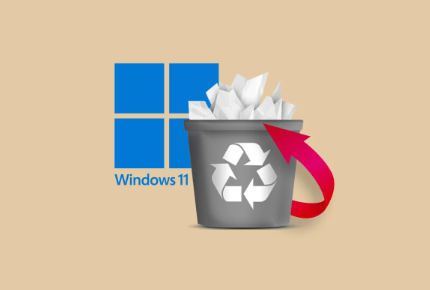Many users rely on the Recycle Bin in Windows or the Trash in macOS to manage deleted files, but situations arise where files are removed permanently from these folders. A common question is whether it’s possible to recover files after they have been deleted from the Recycle Bin. Fortunately, due to the way modern operating systems handle file deletion, recovery is often possible.
When you delete a file in Windows or macOS, it is typically moved to the Recycle Bin or Trash. At this stage, recovery is simple just restore the file directly from the folder. However, when the Recycle Bin is emptied, the operating system does not immediately erase the contents of the file. Instead, the system marks the space on the storage medium as available for new data, leaving the actual file data intact until overwritten. This fundamental principle allows recovery software and professional services to restore files even after permanent deletion.

Why Recovery Is Possible
Several factors make file recovery possible:
Time Since Deletion: The sooner you attempt recovery, the better the chances of success.
Type of Storage Medium: Hard disk drives (HDDs) retain deleted data longer than solid-state drives (SSDs), which may use TRIM commands to overwrite deleted files.
Usage of the Drive: Writing new data to the drive increases the likelihood of overwriting deleted files.
Immediate Steps After Deletion
After realizing that a file has been deleted from the Recycle Bin, immediate action is crucial:
Stop Using the Drive: Do not save new files, install software, or perform updates on the affected drive.
Do Not Install Recovery Software on the Same Drive: Install software on a separate drive or USB device to avoid overwriting deleted files.
Consider Creating a Clone: For highly valuable files, creating a sector-by-sector clone preserves the original data, allowing recovery attempts without risking further loss.
Built-In Recovery Options
Even after emptying the Recycle Bin, some built-in tools in operating systems can help recover deleted files.
1. Windows Previous Versions
Windows maintains restore points and snapshots of folders through System Protection:
Right-click on the folder where the file was stored → Properties → Previous Versions.
Select a restore point prior to deletion.
Click Restore to recover the file.
This feature works if System Protection was enabled before the deletion.
2. File History (Windows)
File History automatically backs up user files and can restore deleted data:
Open Control Panel → File History.
Navigate to the folder where the file was located.
Click Restore personal files and select the file version to recover.
3. Time Machine (macOS)
Mac users can recover deleted files using Time Machine:
Open Time Machine.
Navigate to the folder where the file existed.
Browse previous backups and restore the desired file version.
Cloud Storage Recovery
For users who sync files with cloud storage, recovery can be straightforward:
OneDrive: Deleted files go to the OneDrive Recycle Bin for 30 days. Navigate to OneDrive → Recycle Bin → select and restore files.
Google Drive: Files remain in Trash for 30 days. Open Google Drive → Trash → select the file → Restore.
Dropbox: Navigate to Deleted Files → select the files and restore them.
Many cloud platforms also retain version histories, allowing users to recover previous versions even after edits or partial deletions.
Data Recovery Software
When built-in tools and cloud recovery fail, dedicated recovery software is often necessary. These programs scan storage devices to locate deleted files, even after the Recycle Bin has been emptied.
Popular Recovery Tools
Panda Assistant
Accidentally deleting files and emptying the Recycle Bin can feel like a permanent loss. However, Panda Assistant provides an effective solution to recover deleted files safely and efficiently. Even when files are removed from the Recycle Bin, they often remain recoverable until new data overwrites their storage space.
Why Recovery Is Possible
When a file is deleted, the operating system doesn’t immediately erase its content. Instead, it marks the disk space as available for new data, leaving the deleted file intact. Panda Assistant scans the storage device to locate these recoverable files, making restoration possible.
Steps to Recover Files
Stop Using the Drive
Avoid saving new files or installing programs on the drive where files were deleted to prevent overwriting.
Install Panda Assistant
Download and install the software on a separate drive or USB device to ensure safe recovery.
Launch the Program and Select the Drive
Open Panda Assistant and choose the drive from which files were deleted.
Scan for Deleted Files
Use the Deep Scan option to locate all recoverable files. The software searches beyond the Recycle Bin for files that may appear permanently deleted.
Preview and Select Files
Panda Assistant allows you to preview documents, images, videos, and other files before recovery.
Recover to a Safe Location
Save recovered files to a different drive or external device to avoid overwriting other deleted data.
Tips for Successful Recovery
Act quickly, as recovery chances decrease when new data is written to the drive.
Consider creating a clone of the drive for highly valuable files.
Avoid using the affected drive until recovery is complete.
Panda Assistant makes retrieving files deleted from the Recycle Bin simple and efficient, providing users with a reliable way to restore lost data.
How Recovery Software Works
Recovery software scans for files that have been marked as deleted but not yet overwritten. It usually offers:
Quick Scan: Searches for recently deleted files quickly.
Deep Scan: Conducts an extensive scan to locate all recoverable data.
Steps for Recovery Using Software
Install the software on a separate drive to avoid overwriting deleted files.
Select the drive where files were deleted.
Perform a quick scan first; follow with a deep scan if necessary.
Preview files to confirm integrity.
Recover files to a different drive or external storage.
Advanced Recovery Techniques
1. Command-Line Recovery (Windows)
For hidden or misattributed files:
Open Command Prompt as Administrator.
Run:
chkdsk X: /f
Replace X with the affected drive letter.
Then:
ATTRIB -H -R -S /S /D X:*.*
2. Professional Data Recovery Services
If files are highly valuable or the storage medium is damaged:
Recovery specialists operate in cleanroom environments.
They use advanced software and hardware tools to recover data from physically damaged drives, corrupted partitions, or partially overwritten files.
Recovery on Different Storage Media
SSDs
SSDs use TRIM commands, which can overwrite deleted files quickly. Rapid action is essential, and professional tools may be required for recovery.
External Drives and USBs
Deleted files from external storage can often be recovered, provided the drives haven’t been heavily used after deletion. Recovery software efficiently scans these devices.
Network Drives
Files deleted from network drives may bypass local Recycle Bins. Recovery may require server backups, shadow copies, or professional assistance.
Mobile Devices
iOS: Deleted files appear in the “Recently Deleted” album in Photos for 30 days.
Android: Google Photos or specialized recovery apps can help restore deleted files, especially if backups are enabled.
Best Practices for Preventing Data Loss
Enable File History, Time Machine, or cloud backups for automatic protection.
Use cloud storage for real-time file syncing.
Keep recovery software ready for emergencies.
Handle storage devices carefully to avoid physical damage.
Enable System Restore and file versioning to maintain recoverable copies.
Common Mistakes to Avoid
Continuing to use the affected drive after deletion, risking overwriting.
Installing recovery software on the same drive as the deleted files.
Attempting to recover files to the same location, risking further data loss.
Ignoring the importance of regular backups.
Psychological Aspect of Data Loss
Accidental deletion can cause panic, frustration, or anxiety. Maintaining calm and following systematic recovery steps significantly increases the likelihood of successful file restoration. Consistent backup habits prevent future stress and reduce the emotional impact of data loss.
About us and this blog
Panda Assistant is built on the latest data recovery algorithms, ensuring that no file is too damaged, too lost, or too corrupted to be recovered.
Request a free quote
We believe that data recovery shouldn’t be a daunting task. That’s why we’ve designed Panda Assistant to be as easy to use as it is powerful. With a few clicks, you can initiate a scan, preview recoverable files, and restore your data all within a matter of minutes.

 Try lt Free
Try lt Free Recovery success rate of up to
Recovery success rate of up to









